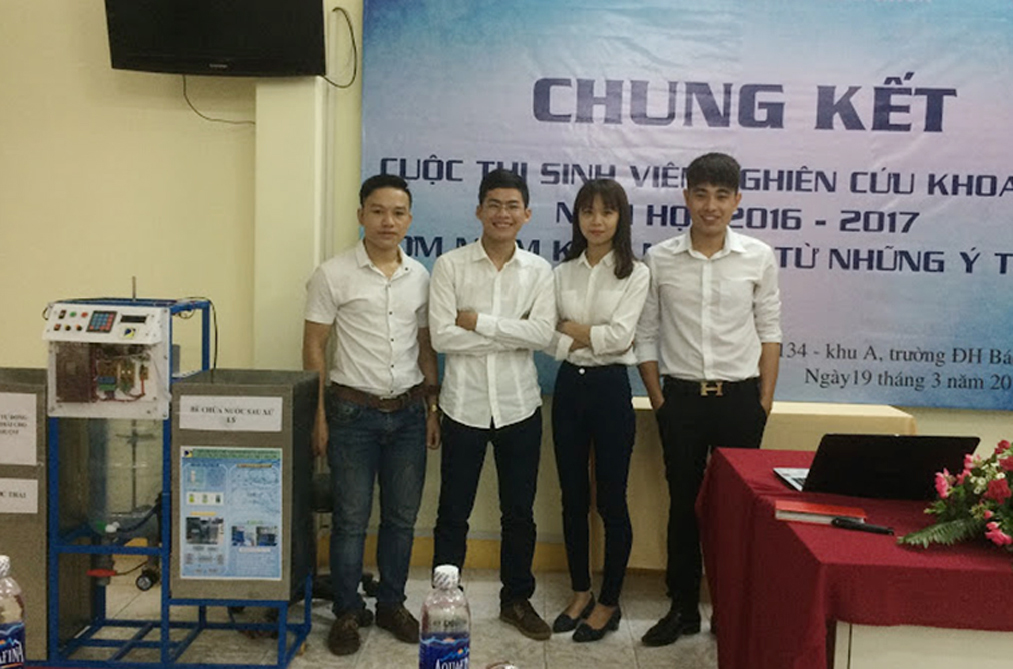Treatment system for textiles dye effluents created by local students
A group of students from the Da Nang University of Technology and Science are currently participating in the on-going ‘Tech Show 2017’ programme which is being organised by the University of Da Nang. Their project involves creating a textiles dye effluent treatment system using coagulant chemicals.
 |
| The students beside their product |
The students are Lam Hung Thang, Nguyen Ngoc Hung, Nguyen Chi Duc and Nguyen Thi Thu Huong, all from the university’s Environmental Science Faculty, and Nguyen Duy Hung from the Faculty of Electricity.
Most notably, their project won the second prize at the recent university-level scientific research conference, and it was highly appreciated for minimising the negative impacts of industrial textile effluents on the aquatic environment.
Thang noted that the majority of dyes used in the textiles industry contain toxic organic compounds which are usually recalcitrant to biodegradation, thereby adversely affecting aquatic life and leading to human diseases.
In an attempt to deal with this matter of high concern, Thang and his coursemates have jointly conducted research into the efficient use of the muIti-functional high polymer flocculant PGa21Ca in textiles effluent treatment. PGa21Ca features polyglutamic acid (PGA) which is a biodegradable polymer of the amino acid glutamic acid (GA). Biodegradable and non-toxic PGA is now widely used in such aspects as wastewater and medical treatment.
Thang said that it took about 2 months to develop this textiles dye effluent treatment model. In particular, he and his coursemates regularly collected samples of textiles effluent from the city’s Hoa Khanh Textiles and Garments Company for testing in their system.
The talented students said that they will increase their efforts to develop their product, with a focus on adding a treated wastewater monitoring system to their project, increasing the size of its reactor tanks, using solar energy in the treatment processes, and perfecting other technologies used in this project.
Dr Le Thi Xuan Thuy from the Environmental Science Faculty said that such a model can be built into small and medium-sized textiles and garments companies. She remarked that the model also helps encourage other local students to promote their passion for scientific research activities, and to diversify the dye effluent treatment solutions on the market.